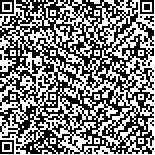本文已被:浏览 752次 下载 193次
Received:November 18, 2022 Published Online:December 20, 2023
Received:November 18, 2022 Published Online:December 20, 2023
中文摘要: 目的 探究2型糖尿病(T2DM)不同中医证型患者血糖波动指标与骨骼肌含量的差异及相关性。
方法 采用回顾性研究的方法,选取2020年9月至2021年9月在上海中医药大学附属曙光医院内分泌科住院的T2DM患者330例,根据中医证型不同分为气阴两虚证(n=169)、阴虚燥热证(n=88)、湿热困脾证(n=73)。观察不同证型间血糖波动相关指标[目标范围内时间(TIR)、血糖标准差(SDBG)、24 h平均血糖波动幅度(MAGE)、日间血糖平均绝对差(MODD)、血糖变异系数(CV)、糖化血红蛋白(HbA1c)]的差异,骨骼肌含量相关指标[相对骨骼肌质量指数(RASM)、四肢骨骼肌质量(ASM)、全身总肌肉质量(TLM)]的差异,分析不同证型T2DM患者中两者之间的相关性。以TIR≥70%为达标。
结果 气阴两虚证组TIR达标率为46.7%,阴虚燥热证组为30.7%,湿热困脾证组为47.9%,三组TIR达标率比较差异有统计学意义(χ2=7.145,P=0.028),且气阴两虚证组和湿热困脾证组的TIR达标率明显高于阴虚燥热组(P<0.05)。湿热困脾证组SDBG、MAGE、MODD、CV均低于气阴两虚证组及阴虚燥热证组(P<0.05), 气阴两虚证组ASM低于阴虚燥热证组及湿热困脾证组(P<0.05),差异均有统计学意义。阴虚燥热证组中,RASM分别与SDBG(r=-0.234,P=0.029)、MODD(r=-0.248,P= 0.029)、CV(r=-0.355,P=0.001)呈显著负相关。
结论 T2DM不同证型间血糖波动及骨骼肌含量存在差异,阴虚燥热证血糖波动与骨骼肌含量存在相关性。
Abstract:Objective To explore the associations of blood glucose fluctuation indexes with skeletal muscle content in different Chinese medicine syndromes of type 2 diabetes mellitus (T2DM). Methods A retrospective study was performed on 330 T2DM patients hospitalized in Shuguang Hospital Affiliated to Shanghai University of Traditional Chinese Medicine from September 2020 to September 2021. According to different Chinese medicine syndrome, the patients were divided into Qi and Yin deficiency syndrome (n=169), dryness-heat due to Yin deficiency syndrome (n=88) and damp-heat tapping spleen syndrome (n=73). For cenalying the relationship between blood glucose fluctuation and skeletal muscle content, the following indicators were observed and compared among the patients with different syndrome types, including time in range (TIR), standard deviation of blood glucose (SDBG), mean amplitude of glycemic excursion (MAGE), mean of daily difference (MODD), coefficient of variation (CV), glycosylated hemoglobin (HbA1c), relative appendicular skeletal muscle (RASM), appendicular skeletal muscle mass (ASM) and total lean mass (TLM). Compliance was based on TIR ≥ 70%. Results The TIR compliance rate of Qi and Yin deficiency syndrome group was 46.7%, dryness-heat due to Yin deficiency syndrome group was 30.7%, and damp-heat tapping spleen syndrome group was 47.9%. There was a significant difference in the TIR compliance rate among the three groups(χ2=7.145, P=0.028), and the TIR compliance rate of Qi and Yin deficiency syndrome group and damp-heat tapping spleen syndrome group was significantly higher than that of dryness-heat due to Yin deficiency syndrome group (P<0.05). SDBG, MAGE, MODD and CV in dryness-heat due to Yin deficiency syudrome group were significantly lower than those in Qi and Yin deficiency syndrome group and dryness-heat due to Yin deficiency syndrome group(P<0.05). In Qi and Yin deficiency syndrome group, ASM was significantly lower than that in other two groups (P<0.05). In dryness-heat due to Yin deficiency syndrome group, RASM was respectively negatively correlated with SDBG (r=-0.234, P=0.029), MODD (r=-0.248, P=0.029) and CV (r=-0.355, P=0.001). Conclusion There are differences in blood glucose fluctuation and skeletal muscle content in T2MD patients with different Chinese medicine syndromes types. There is a correlation between blood glucose fluctuations and skeletal muscle content in patients with dryness-heat due to Yin dificiency syndrome.
keywords: Type 2 diabetes mellitus Chinese medicine syndrome Blood sugar fluctuation Skeletal muscle mass Qi and Yin deficiency syndrome Dryness-heat due to Yin deficiency syndrome Damp-heat tapping spleen syndrome
文章编号: 中图分类号: 文献标志码:A
基金项目:上海市科委科研计划项目(17401970400);上海市社区中医药适宜技术项目(ZY-SYJS-6);上海中医药大学产业发展中心医养结合科创项目(YYKC-2021-01-145)
| Author Name | Affiliation |
| LU Liqun, ZHANG Liqiong, XU Junfei | Department of Endocrinology, Shuguang Hospital Affiliated to Shanghai University of Traditional Chinese Medicine, Shanghai 201203, China |
| Author Name | Affiliation |
| LU Liqun, ZHANG Liqiong, XU Junfei | Department of Endocrinology, Shuguang Hospital Affiliated to Shanghai University of Traditional Chinese Medicine, Shanghai 201203, China |
引用文本:
